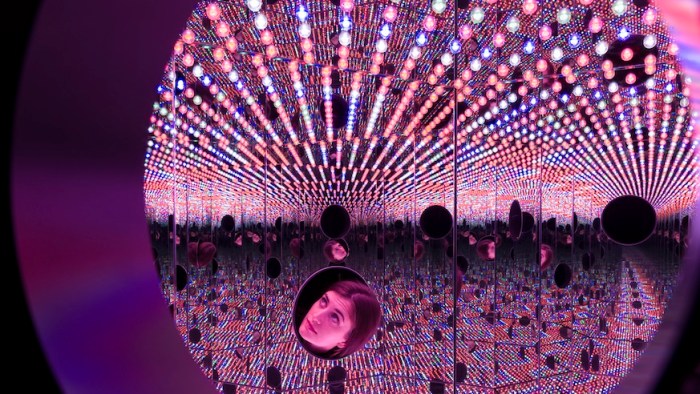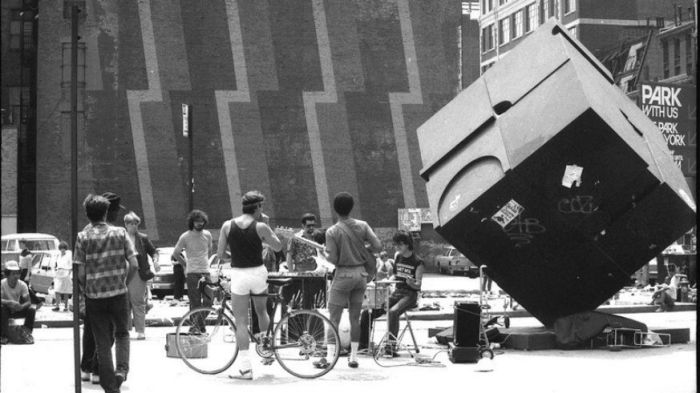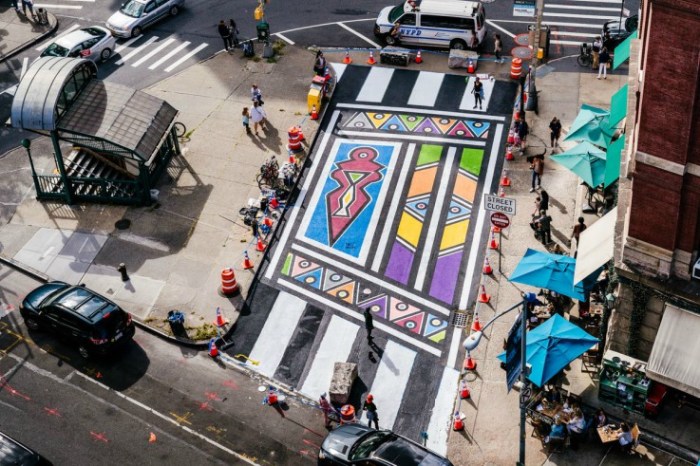If the fashion choices at tonight’s Met Gala mystify you more than years’ past, there’s a reason why.
The annual fundraiser for the Costume Institute takes its theme from Japanese designer Rei Kawakubo, whose creations embody riddles.
Confused? That’s to be expected. The 74-year-old founder of the label Comme des Garcons creates avant-garde pieces that challenge conventional notions of beauty, fashion, even the practical idea of clothing itself — a construct she rejected in 2014, opting instead to create “objects for the body.”
The exhibition, “Rei Kawakubo/Comme des Garcons: Art of the In-Between,” the Costume Institute’s first monographic exhibit of a living artist since Yves St.-Laurent in 1983, opens Thursday, May 4 and runs through Sept. 4. It includes around 140 ensembles from the artist’s oeuvre, spanning 1980 to the present.
At a press preview Monday, we learned all about the iconoclast and her work.
“In blurring the art/fashion divide, Kawakubo asks us to think differently about clothing,” said Thomas P. Campbell, Director of The Met. “Curator Andrew Bolton explores work that often looks like sculpture in an exhibition that challenges our ideas about fashion’s role in contemporary culture.”
Dueling themes
Kawakubo’s ensembles, all fitted on mannequins, are organized into nine aesthetic binaries that she engages with and disrupts: Absence/Presence, Design/Not Design, Fashion/Anti-Fashion, Model/Multiple, High/Low, Then/Now, Self/Other, Object/Subject, and Clothes/Not Clothes.
Her pieces blur these lines, investigating the spaces in between and exposing the arbitrary nature of the oppositions to begin with.
Some you can make sense of. “Ballerina Motorbike,” from the section “High/Low,” pairs a black leather jacket with a tutu of white polyester tulle. By juxtaposing seemingly clashing pieces so that they complement each other — in a kind of goth-femme aesthetic — Kuwakabo dissolves the line between highbrow and lowbrow. We think. Gender binaries get skewered in “Self/Other” via pieces that combine traditional male and female fashions, like trousers and skirts, together into one look.
Sartorial riddles
Other times, it’s hard to know what you’re looking at, as Kuwakabo’s work often verges on the absurd. Take “Tomorrow’s Black,” a creepy, bulbous suit of black polyurethane-rayon faux leather, that looks fit for a life-sized black widow spider more than an outfit a human would wear. Kurowago turns any notion of form-fits-function on its head. “The Future of Silhouette,” from “Design/Not Design” is a brown paper dress, amorphous except for a twist in the center, that looks like if the Stay Puft Marshmallow man were wearing a blown up brown paper bag from the corner store. The back story: Kawakubo presented a crumpled piece of paper to her design team and asked for a pattern that would represent it.
The exhibition set-up
The radical designer doesn’t like to explain her work and prefers her clothes to speak for themselves, curator Andrew Bolton explained during the event. The exhibition honors her aesthetic preference by omitting any text, which forces the viewer to engage directly with the work and best make sense of it by oneself. (Those in need of some explainers can find captions and context in an accompanying booklet).
The mannequins are displayed on all white geometric structures that viewers can navigate at their own pace. The spare white of the installations naturally spotlight Kawakubo’s work, while underscoring the exhibition’s central tension: what inhabits the space in-between.
Bolton spoke to Kuwakabo’s influence in the art and fashion world: “Since her first show in Paris in 1981, she has consistently surprised and disrupted our expectations,” he said. “Season after season, collection after collection, she changes our eye by upending perceived notions of beauty. Rei has taught us that the body has no bounds, and that the potential of clothing is limitless. In so doing, she’s placed fashion at the epicenter of modern culture.”


















